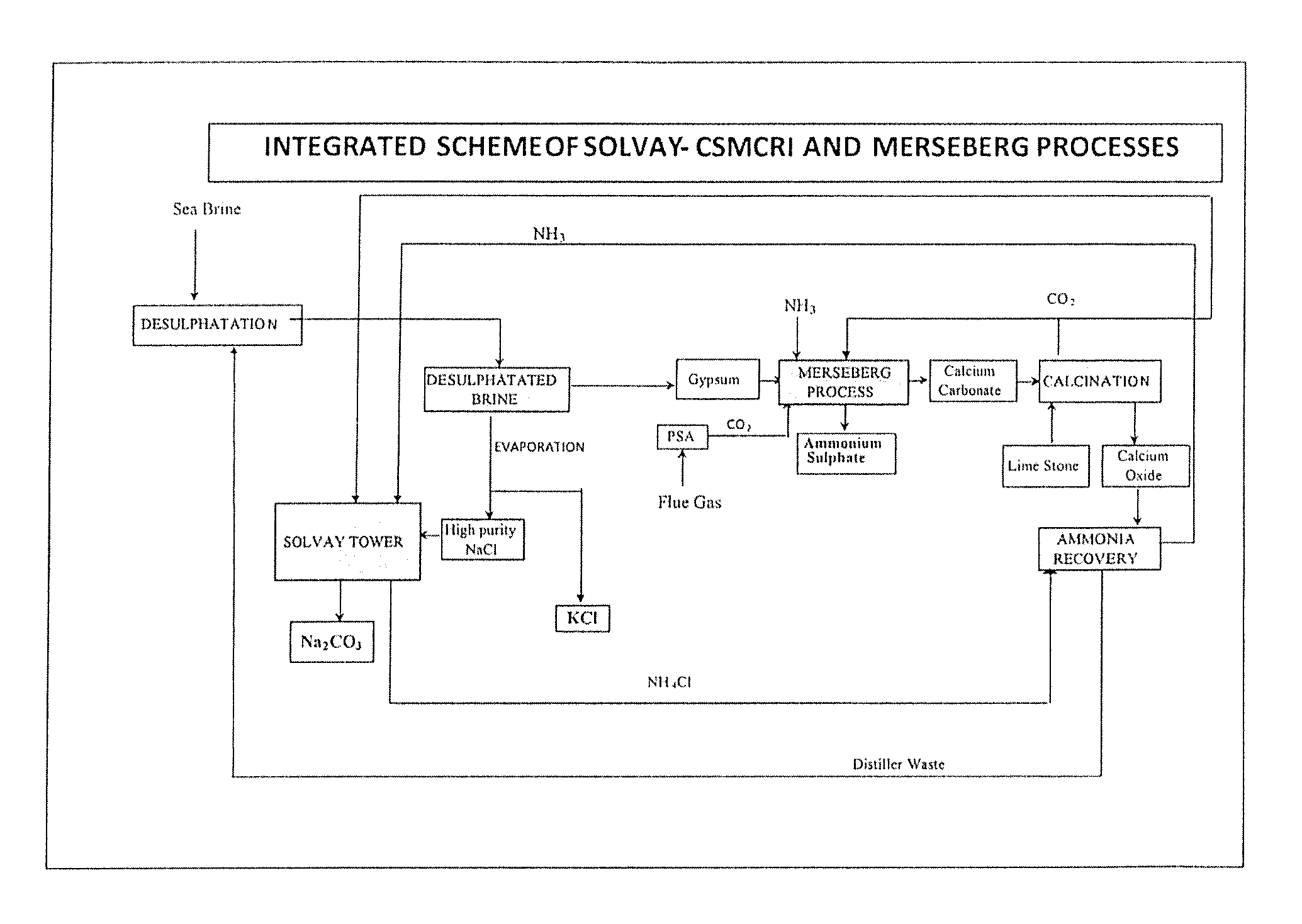Method of recycling of by-products for the production of soda ash and ammonium sulphate
a technology of ammonium sulphate and by-products, which is applied in the field of soda ash and ammonium sulphate production, can solve the problems of co-generation of cacl/sub>2, achieve positive effects, reduce the discharge of distiller waste, and reduce the emission of flue gas
- Summary
- Abstract
- Description
- Claims
- Application Information
AI Technical Summary
Benefits of technology
Problems solved by technology
Method used
Image
Examples
example 1
[0065]10,000 L of ˜3.8° Be′ sea brine with SO42− concentration of 2.74 g / L was subjected to desulphatation by adding 290 L of soda ash distiller waste having 12% (w / v) CaCl2 concentration. 42 kgs of gypsum having purity of 92.5% (as CaSO4) was produced.
example 2
[0066]100 g of gypsum of Example 1 was suspended in 400 ml of solution containing 25.4 g of ammonia taken in a 750 ml capacity high pressure reactor. The mixture was agitated continuously at about 500 rpm. Temperature of the reaction mass was raised to 60° C. Then nitrogen gas was introduced to the high pressure reactor through a gas inlet valve, outlet of which was made to dip into the reacting mass, and the pressure was adjusted to 113 psig. Then CO2 was introduced continuously into the high pressure reactor through the same gas inlet valve, keeping the total pressure at 133 psig so as to achieve the simulated flue gas composition (15±1% CO2 and 85±1% N2) after removal of impurities such as SOx and NOx. During first two hours, increase in the pressure of the reactor was not observed due to the consumption of CO2 introduced. However, the temperature increased from 60 to 70° C. during initial 15 minutes and then gradually decreased to 60±3° C. over a period of 2 h. After two hours t...
example 3
[0067]The experiment of Example 2 was repeated maintaining a lower temperature of 34° C. and total pressure (of CO2 and N2) of 203 psi with other similar gas composition as in Example 2. The yield of ammonium sulphate was only 10.5 g.
PUM
| Property | Measurement | Unit |
|---|---|---|
| pressure | aaaaa | aaaaa |
| temperature | aaaaa | aaaaa |
| temperature | aaaaa | aaaaa |
Abstract
Description
Claims
Application Information
 Login to View More
Login to View More - R&D
- Intellectual Property
- Life Sciences
- Materials
- Tech Scout
- Unparalleled Data Quality
- Higher Quality Content
- 60% Fewer Hallucinations
Browse by: Latest US Patents, China's latest patents, Technical Efficacy Thesaurus, Application Domain, Technology Topic, Popular Technical Reports.
© 2025 PatSnap. All rights reserved.Legal|Privacy policy|Modern Slavery Act Transparency Statement|Sitemap|About US| Contact US: help@patsnap.com


